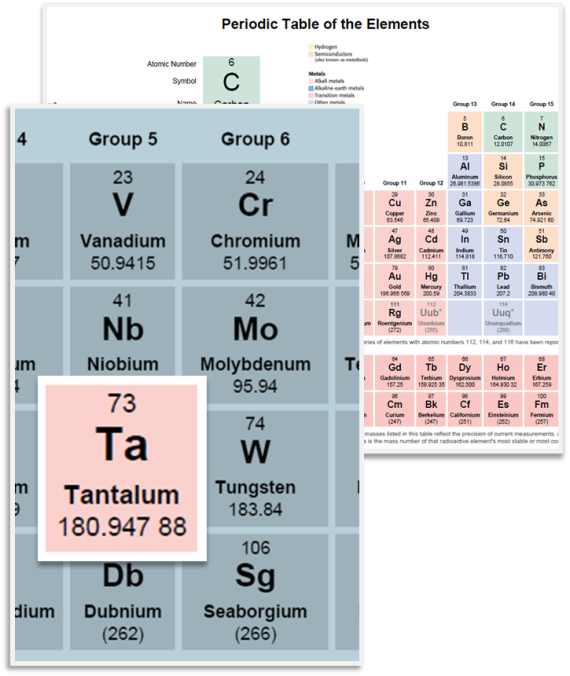 Overview
Overview
Tantalum, a lesser known element on the periodic table, is best known for being one of the most corrosion resistant and inert metals on earth, even surpassing gold. In fact, in most extremely corrosive, strong and hot acid environments, such as HCl, H2SO4, Piranha acid, acetic acid, nitric acid, etc., tantalum metal has no detectable corrosion rate; essentially tantalum eliminates corrosion. Furthermore because of its inertness, it’s safe to use within the body for medical applications and ideal in applications where minuet levels of contamination are detrimental.
What makes tantalum metal so corrosion resistant and inert is the fact that tantalum has an extremely tenacious and tough protective oxide layer.This oxide layer is tightly bound to its tantalum base, which is virtually impossible to remove because it regenerates instantly from any oxygen source.
As a result, when compared with other specialty metals such as nickel alloy, titanium alloy or zirconium, tantalum metal's corrosion resistance is orders of magnitude better. Tantalum's unique corrosion resistance allows tantalum to operate in acid environments that are stronger, more concentrated and hotter where no other metals could survive. This makes tantalum an ideal material to eliminate corrosion in strong acid environments.
To help you understand tantalum's unmatched corrosion resistance compared with other materials like nickel alloys (Hastelloy), titanium and zirconium we have supplied hydrochloric acid and sulfuric acid iso-corrosion curves. These curves are based on data from the Corrosion Engineering Handbook comparing the corrosion resistance of various specialty metals at different temperatures and concentrations in HCl and H2SO4.
Another interesting property of tantalum is that it has a density of 16.6 g/cm3, which is almost 50% denser than lead. Because of this tantalum can block radiation, making it radio-opaque and visible with x-rays. This is an important characteristic for implantable medical devices.
Physical Properties
- Atomic Number: 73
- Density: 16.6 g/cc
- Melting Point: 5468°F, 3020°C
- Boiling Point: 9856°F, 6100°C
- Coefficient of Thermal Expansion (20°C): 6.5 x 10-6 / °K
- Electrical Resistivity (20°C): 13.5 microhms•cm
- Electrical Conductivity: 13% IACS
- Specific Heat: 0.036 cal/g/°C
- Thermal Conductivity: 0.13 cal/cm2/cm°C/sec